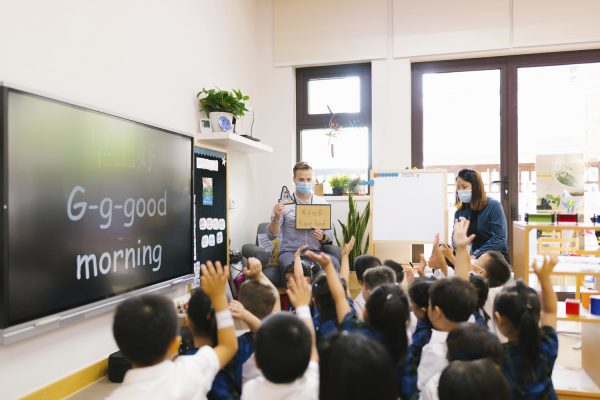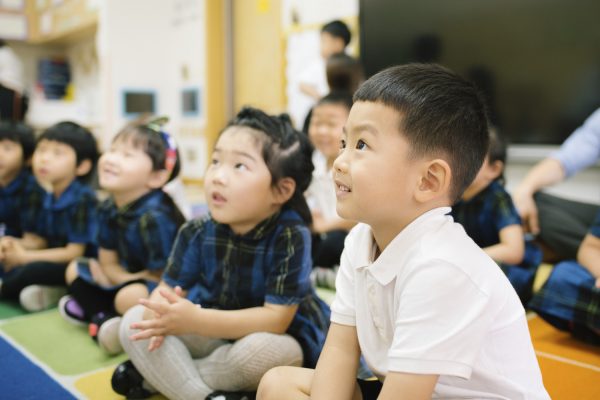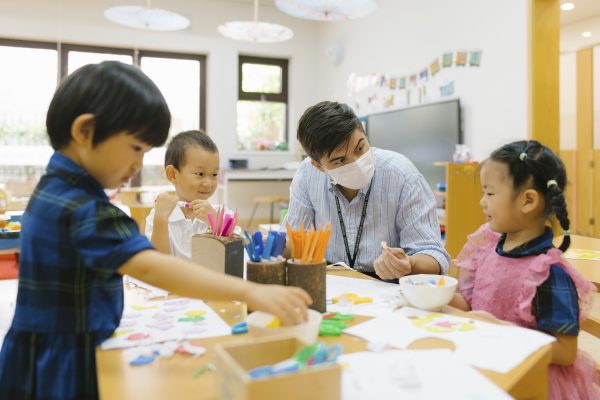
Writing insight articles provides me an opportunity for a little self-indulgence; I am trusted to write about whichever topic I choose. I have written insight articles for over five years and have modified the messages I wished to send out to the wider community as that time has progressed. Initially, the messages had a clear yet subtle marketing undertone as I wanted the reader to know about who we were, what we did and how we did it. As time moved on, there was no longer a need to hold the who, what and how as a central focus. The focus has moved towards the why. Why did we make a concerted decision to deliver education the way we do? Whilst our model falls under the umbrella of bilingual education, it is very different to most and is the result of the collective efforts of many who have been willing to try, review, improve and try again. The result is a true reflection of our vision, ethos and identity.

It is a rare treasure as an educator to be afforded the opportunity and freedom to create an educational ethos and curriculum that will bring a vision to life through inspirational and age-appropriate pedagogical approaches. To be trusted by those in the highest positions of an organisation to take a dream and bring it to life in the knowledge that it may not happen overnight is indeed an honour. Believing in the pedagogical approaches chosen at each level of the educational journey takes a leap of faith. Faith is, in return, rewarded with evidence of pupil progress and high levels of wellbeing and involvement. Teachers are happy. Parents are happy. Most importantly, the pupils are happy.

When people talk about the pedagogy of teaching, they refer to the way teachers deliver the content of the curriculum to a class:https://www.tes.com/news/what-is-pedagogy-definition. When early years practitioners plan learning opportunities, they will consider different ways to provoke learning, impart specific knowledge and promote certain skills and characteristics. That decision will be made based on their own pedagogical preferences, their experience, and the context that they teach in. When bringing a vision to life, there is an explicit necessity to have like-minded practitioners who think, behave and promote learning in a similar way. “It is important for children to learn in this way as they are accessing all areas of learning without teachers having to give children the skills for it. We are teaching the children how to learn, and this is a skill that they can take forward with them for life.””
—— Katie Ware, EY4 teacher
Since 2015, when the vision for Huili Nursery was conceived and published, we have wanted to be a leading and inspirational early years’ education provider. Our desire to afford every child the opportunity of growth and fulfilment in an environment which imbues the Huili values of kindness, courage, integrity, respect and responsibility sits firmly at the heart of our vision.

As early years educators, we appreciate that every child is a unique and able learner from birth and as such, we aim to scaffold the learning journey to promote, enhance and develop each child holistically. Any educational institution can claim that its vision is to be the best in its field and can shout loudly about facilities, enrolment numbers and outcomes; but how is ‘being the best’ really measured against a vision, and does it matter if you’re not the best? Is it not more important to be the best version of your vision, the best version of yourself as an organisation / team / individual?
“My motivation as a teacher is that I can help a child in a very individual way. In my class, I have 22 different and interesting little human beings who are not similar in who they are. During my interactions with them, I can see the impact of our pedagogy making them more responsible, kinder, more courageous, willing to take risks and demonstrate integrity at the very beginning of their lives.”
——Sarah Zhang, EY3 teache
I worked closely with members of the academic team to pull together some fundamental commitments to what we believed our collective why to be:

It is exhausting being an early years’ practitioner. Being both responsible for, and responsive to a class of young learners is without a doubt exceptionally rewarding. With the abundant rewards come the demands on every practitioner’s life: the time, energy, commitment and effort to fulfil the individual role, team goals and institutional vision. When pupils are on site, the role of the practitioner is to promote and provoke learning, supporting, stretching and challenging each pupil at every opportunity through impactful interactions in a purposeful environment. It is less about ‘teaching’ in the traditional sense and more about creating and facilitating learning opportunities. The learning experience evolves continually in response to pupils’ interests and needs and can, at times be akin to travelling at speed on roller skates: utterly enthralling and invigorating yet along a route which is both uncertain and undetermined. By comparison, traditional teaching is easy as it is directed and led by adults.

Planning for pupil progress and next steps in learning, assessing, compiling evidence profiles, attending meetings, analysing pupil progress and attainment, undertaking CPD and training, writing newsletters for, and communicating with parents and providing photographs and videos of learning are tasks to be done in the hours when the pupils are not on site. Considering children are on site from 08:00 – 16:00, there is a significant commitment required from practitioners to tick these off their ‘to do list’ during their own time, their weekends and their holidays. Why do they do it? Please refer to the statements above and be reassured of the reasons you have made the choices you have made for your child’s early years education.